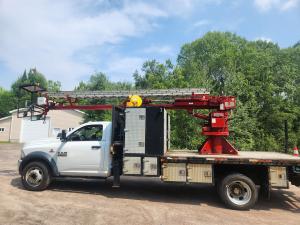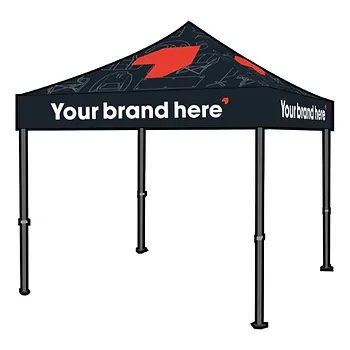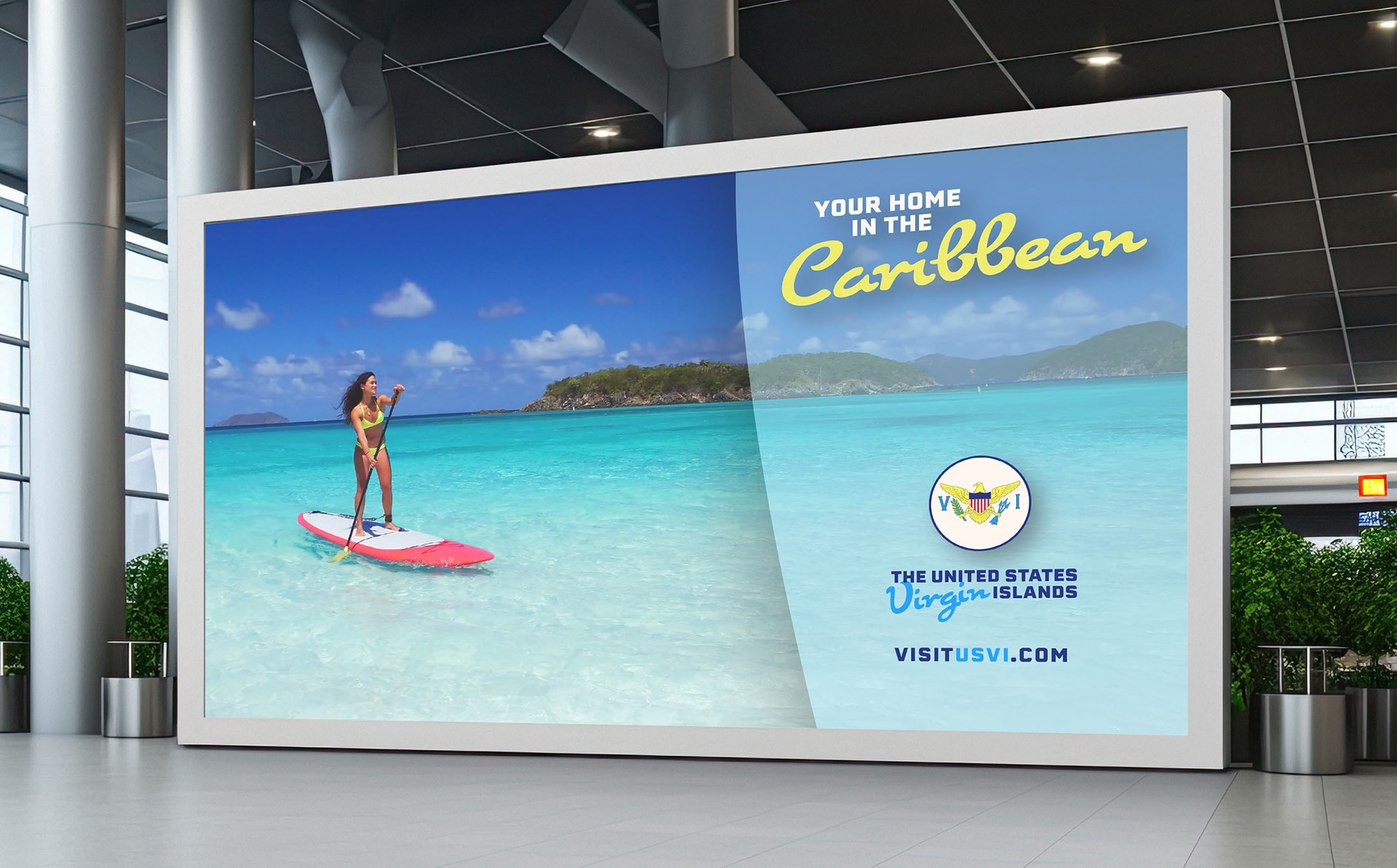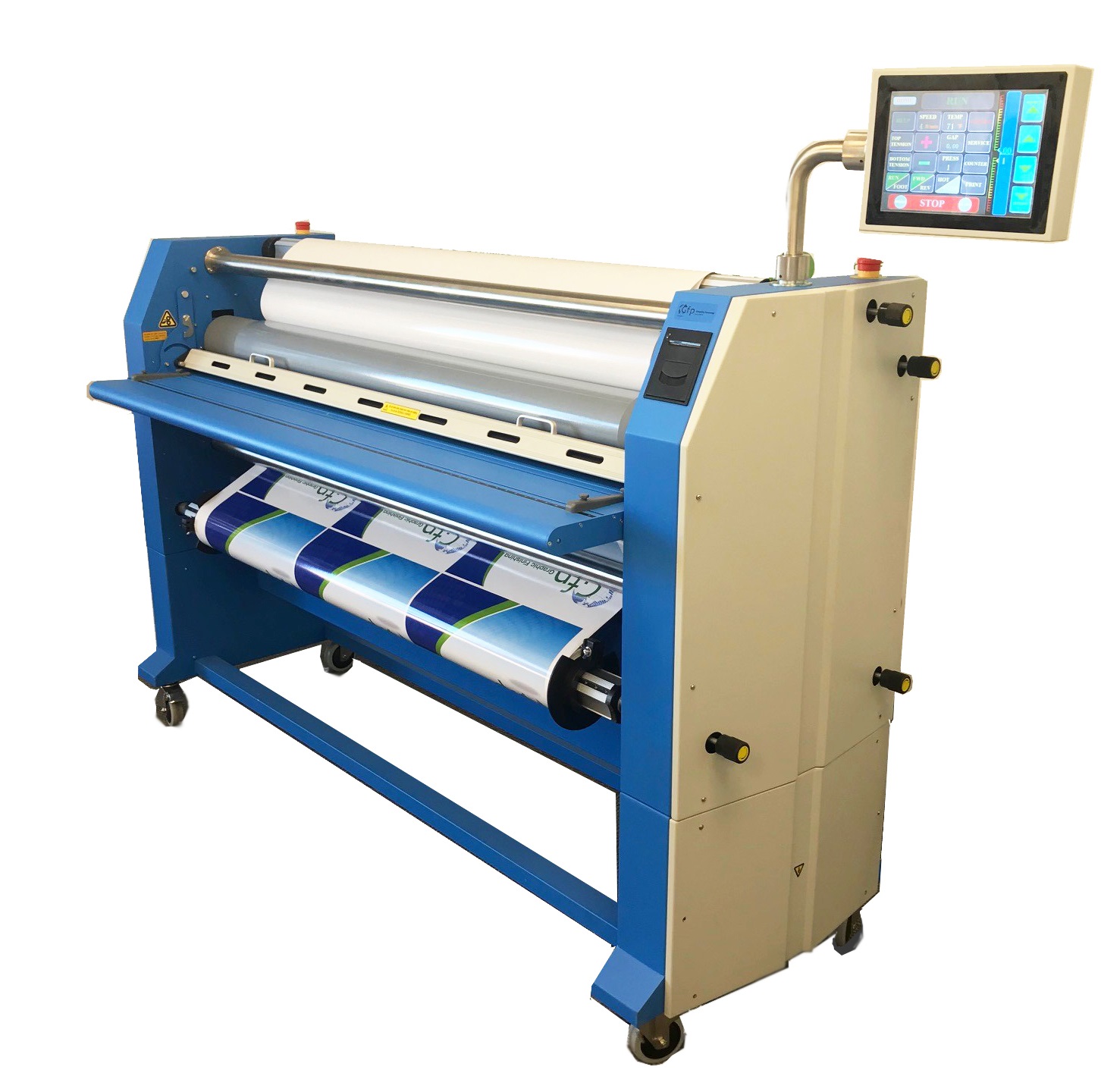Dressing up Toronto for the Pan Am Games
This process also involved designing the artwork with the physical realities of the vessel in mind. Perforated films, for example, would be used along the windows to ensure a complete image was created on the exterior while passengers on-board could see outside.
“And we had to design the graphics to allow for these windows being opened,” says James Cummings, project manager for Holman.
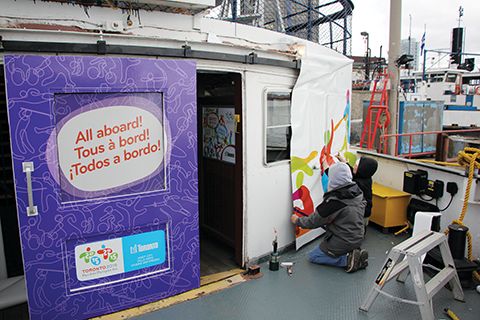
The company also specified a variety of substrates for the job.
“The undersides of the ferry’s ramps are wooden,” Cummings explains, “so we first had to attach Dibond aluminum composite panels to them, before we could apply vinyl graphics.”
Holman printed the wrap artwork on 3.7-m (12-ft) long 3M vinyl panels, using its HP Scitex flatbed printer. Coroplast corrugated plastic and polystyrene (PS) posters, mesh banners and translucent backlit graphics—for existing lightboxes inside the ferry—were also printed on the flatbed, with only fabric pennants farmed out to Flags Unlimited in Barrie, Ont., which printed them with dye sublimation technology before stitching them.
“We try to do as much as we can in-house,” says Cummings.
The wrap was installed the week of May 11, to ensure it would be completed on time for the Victoria Day weekend, which marks the start of the ferries’ operating season, but this meant a tight timeframe.
“We had to complete the installation before the long weekend,” says Bain, “but because the harbour was iced over much later than usual this year, due to a harsh winter, my colleagues in the parks department couldn’t get the ferry in and out of dry dock as early as originally planned. The delay condensed Holman’s installation time down to less than one week.”
“We just had four days to do it, between May 11 and 15,” says Cummings, “and it was tricky work. A cherry picker couldn’t reach the ends of the vessel, so we had to hang from ramps at the sides of the yard. The install also took longer than we thought because it was wet and windy.”
At the same time, as mentioned, posters and banners were also installed at the mainland terminal, showcasing a variety of Pan Am and Parapan Am messages.
“We took over the whole terminal with a sort of mini domination campaign,” says Bain, whose OOH industry experience includes previous work for Pattison Outdoor Advertising.
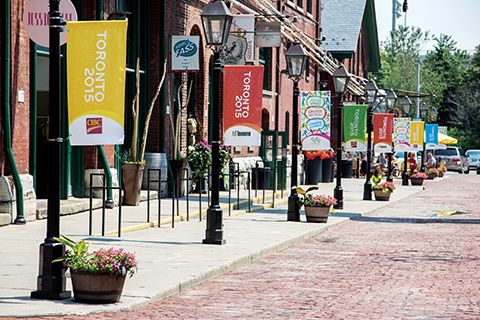
Despite the lack of precedent, the project was a success.
“Everything with Holman was very turnkey,” Bain says, praising both the appearance of the ferry and the company’s prompt response time when there was trouble, such as when posters in the ferry needed to be replaced due to water damage.
“We did a weekly check on all of the graphics because of concerns about vandalism and other damage,” says Cummings. “The city was worried the wrap vinyl could get scuffed, but fortunately it didn’t. There were no major hiccups or issues.”
The terminal posters were removed shortly after the Parapan Am Games ended in mid-August, but the wrap could not be removed until after the ferry season concluded on the Labour Day weekend in early September.
OOH ads
The mascot for the 2015 Pan Am Games was Pachi, a porcupine with 41 multi-coloured quills, representing each of the participating countries. His species was an appropriate choice, as porcupines are found throughout North and South America, including more than 20 of the countries competing in the games.

One of the ways the city sought to generate local excitement for the games was to have Astral Out-of-Home create and affix 3-D sculptures of Pachi to the roofs of four transit shelters. These were accompanied by traditional posters inviting pedestrians to take photos with Pachi and share them via social media, using the hashtags #HostCity2015 and #PACHI.
The sculptures and posters were installed at shelters near four intersections across Toronto: Jane Street and Finch Avenue; Kennedy Road and Lawrence Avenue; Yonge and Dundas Streets; and Bay and Queen Streets. They remained up for eight weeks, from June 22 to August 14.
Meanwhile, Pachi decals and posters were displayed without sculptures for the same period at transit shelters near four other intersections across the city: Yonge Street and Sheppard Avenue; Danforth and Victoria Park Avenues; Queen Street and Carlaw Avenue; and Lakeshore Boulevard and Kipling Avenue.

